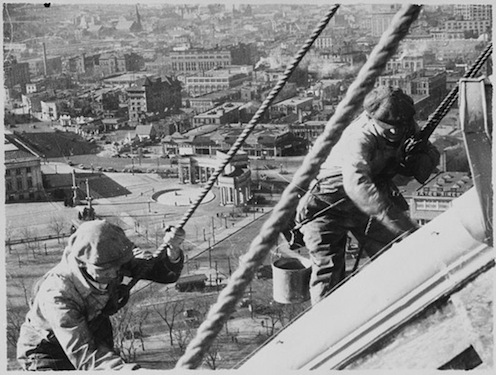
President Franklin D. Roosevelt unveiled the Civil Works Administration on November 8, 1933, and put one of the architects of the New Deal Harry L. Hopkins, in charge of the short-term agency. Roosevelt was convinced that jobs were much better for everyone than cash handouts.
The Civil Works Administration was a short-lived U.S. job creation program established by the New Deal during the Great Depression to rapidly create manual labor jobs for millions of unemployed workers. The jobs were merely temporary, for the duration of the hard winter of 1933-34. The unemployment rate during that time was around 24.9 percent. The Civil Works Administration was a project created under the Federal Emergency Relief Administration (FERA). The Civil Works Administration created construction jobs, mainly improving or constructing buildings and bridges. It ended on March 31, 1934, after spending $200 million a month and giving jobs to 4 million people.
The Civil Works Administration’s workers laid 12 million feet of sewer pipe and built or improved 255,000 miles of roads, 40,000 schools, 3,700 playgrounds, and nearly 1,000 airports (not to mention building 250,000 outhouses still badly needed in rural America).The program was praised by liberal Republican Alf Landon, who later ran against Roosevelt in the 1936 election.
An example of the effectiveness the Civil Works Administration is one county’s accomplishments: in less than five months, from November 1933 to March 1934. Grand Forks County, North Dakota put 2,392 unemployed workers on its payroll at a cost of about $250,000. When the Civil Works Administration began in eastern Connecticut, it could hire only 480 workers out of 1,500 who registered for jobs. Projects undertaken included work on city utility systems, public buildings, parks, and roads.
Rural areas profited, with most labor being directed to roads and community schools. Civil Works Administration officials gave preference to veterans with dependents, but considerable political favoritism determined which North Dakotans got jobs. The Civil Works Administration ended due to a lack of funding. It was replaced with the Works Progress Administration also headed by Harry Hopkins. The Works Progress Administration would have long-term value for the society, in addition to short-term benefits for the unemployed.
Photo: Workmen clean and paint the gold dome of Denver Capitol as part of the Civil Works Administration (U.S. Information Agency/Wikimedia).












Comments